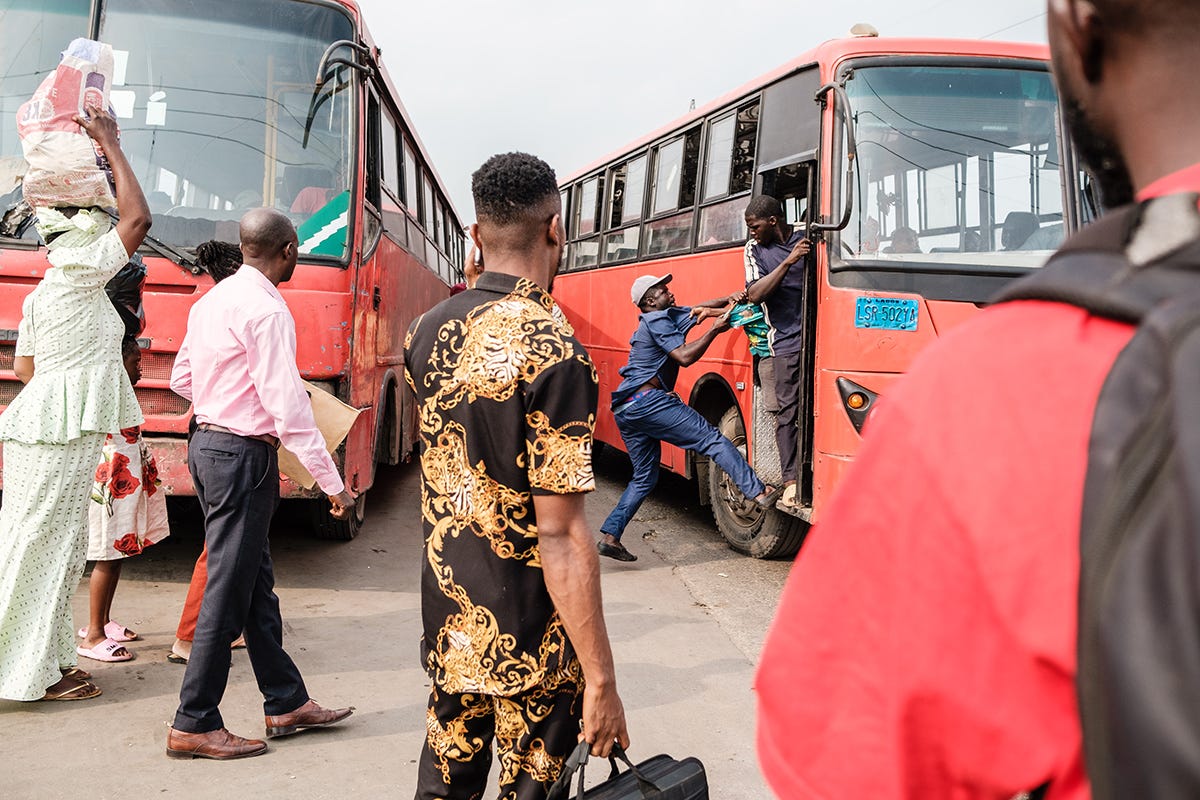Notice the feet of onlookers, planted or lifted, holding the body firm, in mid-stride—the feet of the little girl, the woman beside her, and the brown shoes of a man inches ahead. Consider the feet as a shaft by which all human witnessing turns. And what’s here to witness? A man’s foot aloft, and his mouth pursed with intention, and his hand taut in either assault or self-defence or both. A scene whose drama is casual in its immediacy.
— Emmanuel Iduma
“When most people think of Lagos, they think of vibrancy and roughness in equal measure.”
The photograph was taken at Ketu, Lagos, Nigeria. I took it on one of my daily walks. I had observed the agbero—as they are popularly known in Lagos—having a disagreement with the bus conductors and one thing led to another and they were at each other's throats. I quickly composed myself and my gear and took this photograph just as the bus conductor got into the bus and the driver was about to drive off. The agbero, clearly not having it, didn't want to let go.
This represents a view of what daily life in Lagos is about. When most people think of Lagos, they think of vibrancy and roughness in equal measure.
My approach is simple: to document daily life and environmental as well as social issues in the community.
— Jean-fidèle
About Jean-fidèle
Jean-fidèle is a street and documentary photographer based in Lagos, Nigeria. He has volunteered in several youth development and social initiatives such as Ignite Passion, The Conversation Cafe and SustyVibes. He has worked with PhotoWaka Africa, a community that grooms passionate photographers, as the lead photographer. He is a member of APJD (Africa Photo-Journalism Database), a joint project by World Press Photo and Everyday Africa. See more of his work on Instagram.
Last Week — Hickmatu Leigh
Photography is impactful because it allows people to see the world from different perspectives. It connects two souls just by a single glance.
Read More: The Bondo Culture
Support Tender Photo
This is the 54th edition of this publication. The newsletter can also read on web (best for viewing images), and via the Substack iOS/Android apps. Every week I feature one photograph and the photographer who took it: you’d read a short caption from me, and a statement from the photographer. My goal is to support early to mid-career African photographers by engaging with their work, and to create a platform in which photographers lead the cataloguing and criticism of their work. If this newsletter was shared with you, consider subscribing, or forward to a friend. Please whitelist the newsletter to ensure you never miss it.





I think in Lagos, and it might be similar in other places, you learn how to partake in violence without committing. In the photograph the people are onlookers, despite the pressures of the day, they pause to watch what might devolve into violence or blood and yet, they do not fully stop unless there is real blood and even then maybe not. They carry the video in their head and reenact to partners, friends and schoolmates later on.